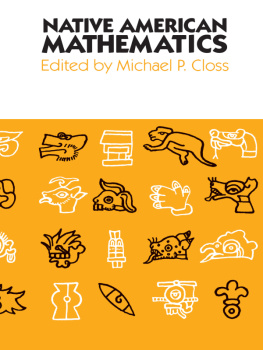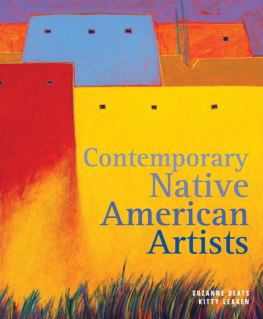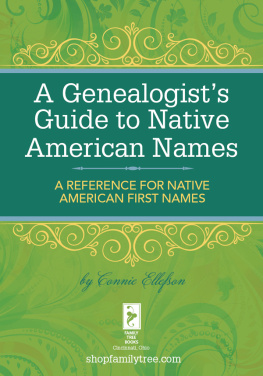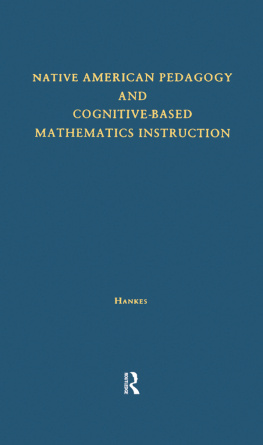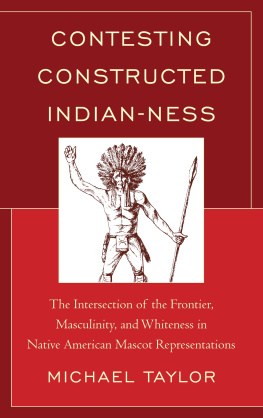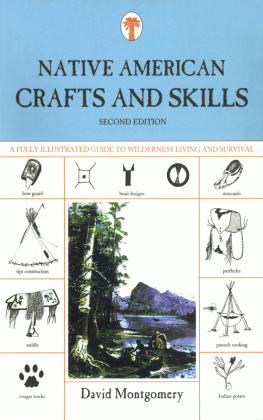Native American Mathematics
Edited by Michael P. Closs

University of Texas Press, Austin
International Standard Book Number: 0-292-75537-1 (cloth); 0-292-71185-9 (pbk.)
Library of Congress Catalog Card Number 86-50592
Library ebook ISBN: 978-0-292-76114-8
Individual ebook ISBN: 978-0-292-78981-4
DOI: 10.7560/755314
Copyright 1986 by the University of Texas Press
All rights reserved
Printed in the United States of America
Second paperback printing, 1997
Requests for permission to reproduce material from this work should be sent to Permissions, University of Texas Press, Box 7819, Austin, Texas 78713-7819.
utpress.utexas.edu/index.php/rp-form
For reasons of economy and speed this volume has been printed from camera-ready copy furnished by the editor, who assumes full responsibility for its contents.
Contents
Modern mathematics is international in character. Its concepts are transmitted, studied and developed in numerous national languages in all parts of the world. The symbolic description of these concepts is presented in a universal mathematical notation independent of language. For example, as a part of this notation, numbers are expressed in a decimal system using Hindu-Arabic numerals.
The international nature of modern mathematics is a relatively recent phenomenon and represents a continuation of mathematical developments which occurred in Europe during the centuries from 1600 to 1900. The flowering of European mathematics was first nourished and stimulated through contacts with the Arabic world which had experienced an intellectual awakening during the great expansion of Islam. Arab savants had accumulated a repository of mathematical knowledge which drew on sources to be found in India, Persia and the Mediterranean world. These sources were themselves fed by the earlier mathematics of ancient Greece, Egypt and Babylonia. Thus, modern mathematics results from the cumulative effort of diverse peoples over thousands of years.
Historians of mathematics have concentrated on the great main stream leading to modern mathematics and have paid only scant attention, if any at all, to mathematics in cultures not directly contributing to it. There are exceptions to this tendency and some studies of Chinese, Japanese and African mathematics have appeared. In addition, some work has been done on the primitive origins of counting, arithmetic and geometry. The present volume is also exceptional in that it focuses on the mathematical development indigenous to the New World. This is an area about which there is a dearth of information in the mathematical literature. It is my hope that this work will help to remedy this state of affairs and will lay a foundation for future studies in this area.
In my opinion, native American mathematics can best be described as a composite of separate developments in many individual cultures. The contributions to the volume are concerned with several aspects of this development among various native American groups. The papers, considered as a whole, give a good representation of the variety of mathematical experience found in the New World. The papers also give some idea as to the form which the history of mathematics must take if it is to incorporate material outside of its traditional boundaries. It is a form in which an almost total reliance on the historical approach is supplemented or replaced by drawing on the resources and methodologies of other disciplines such as anthropology, archaeology and linguistics.
ACKNOWLEDGEMENTS
I wish to thank the Canadian Society for the History and Philosophy of Mathematics for its early support of a project which led to the present volume. I am grateful to the Social Sciences and Humanities Research Council of Canada and the Rector's Fund of the University of Ottawa for providing me with research grants to conduct studies in this area over the past several years. I am indebted to Michelle Lukaszczyk, France Jean, and Madelaine Latour of the Department of Mathematics of the University of Ottawa for typing the copy for this work. Finally, I express my appreciation to the contributors to the volume whose patience and assistance have helped to make it a reality.
Michael P. Closs
NUMBER SYSTEMS
Many number systems of North and south America are decimal systems, or 10-systems, meaning that the formation of their number words is based on groupings of 10. This is true, for example, in the regions of North America occupied by the Algonquian, Siouan, Athapascan, Iroquoian and Salish linguistic stocks and in that part of South America dominated by the Quechua. However, in the Inuit area, most of Mexico and Central America, parts of California and the regions occupied by the Caddoan stock, the number systems are based on primary groupings of 20 and are called 20-systems. If there are secondary groupings of 5, or 10, we may further refine the nomenclature and speak of 5-20 systems, or 10-20 systems. In addition to these systems, there are some which use another base altogether or have no base at all.
It is worth mentioning that a diversity of number systems also existed outside of the Americas. Although most Old World peoples employed 10-systems, there were exceptions. The Celtic of northwestern Europe, the Ainu of northeastern Asia, the Yoruba, Igbo and Banda of Africa, and the native Australians of Victoria all used 20-systems. Moreover, many other native tribes of Australia, as well as the Bushmen of Africa, used 2-systems. Yet, this diversity is still not comparable to that found in the New World.
The numeral words up to ten are generally opaque in the Indo-European languages save for their numerical significance. The stems for these numerals are very uniform, even though they appear in languages which are mutually unintelligible and so different that their common origin would not be known but for study. Neither of these patterns necessarily hold in other linguistic families. Indeed, many Native American languages have numeral words below ten, which illustrate digital origins or origins by arithmetical processes. And, while some families, such as the Mayan, exhibit great uniformity in their numeral stems, others do not. Perhaps the most extreme example of the latter is found among the four languages of the Yukian family. With one exception the numerals up to 3 in these dialects are related. From 4 on they differ completely and are all composite. In many cases the meaning of the compositions is clear and it can be seen that the significance of the numerals, the actions or objects referred to, are almost invariably different. Moreover, even the methods of forming the numerals differ since one of the four is an 8-system, two others are 5-10-systems and the fourth is a 5-20-system (Dixon and Kroeber 1907, p.670)
This paper begins with a general discussion of the origin of native American number words and the problem of the upper limit of counting in a number system. In the remainder of the paper, the emphasis is placed on an examination of the number systems from several specific cultural groups. This will permit one to examine not only individual number words but, more importantly, the systemic nature of numeral formation. The groups considered are selected to complement those discussed elsewhere in the volume and are chosen to exemplify the variety in the types of number systems found in the Americas. They are presented in a more or less increasing order of complexity.
ORIGIN OF NUMBER WORDS

 University of Texas Press, Austin
University of Texas Press, Austin
